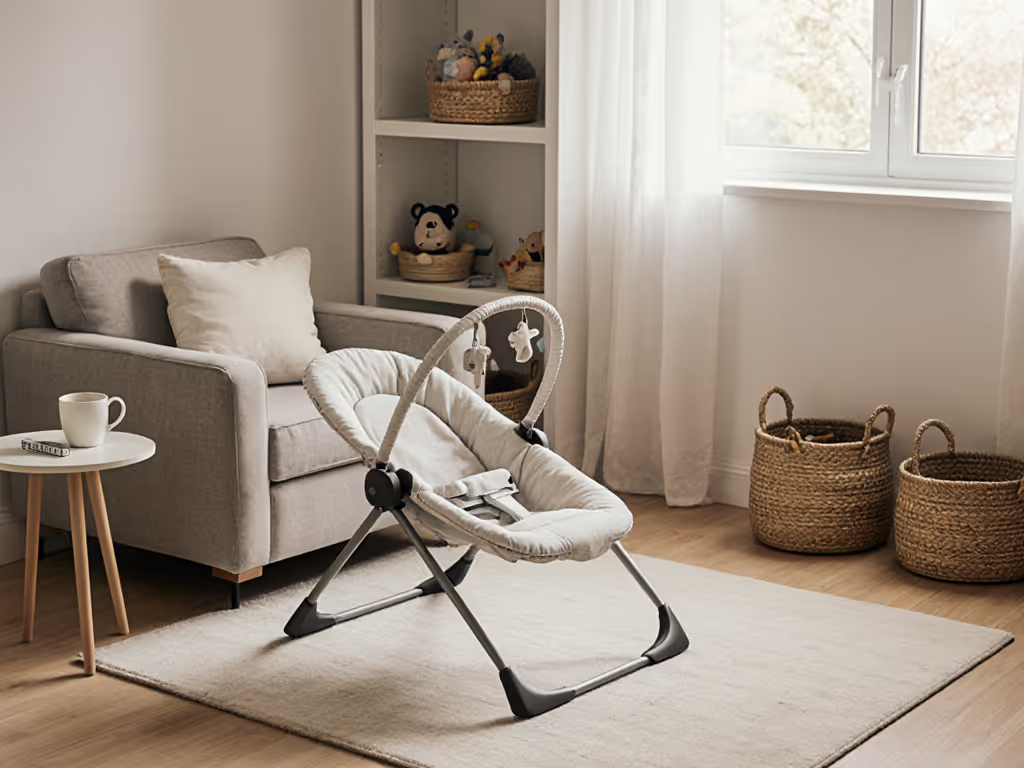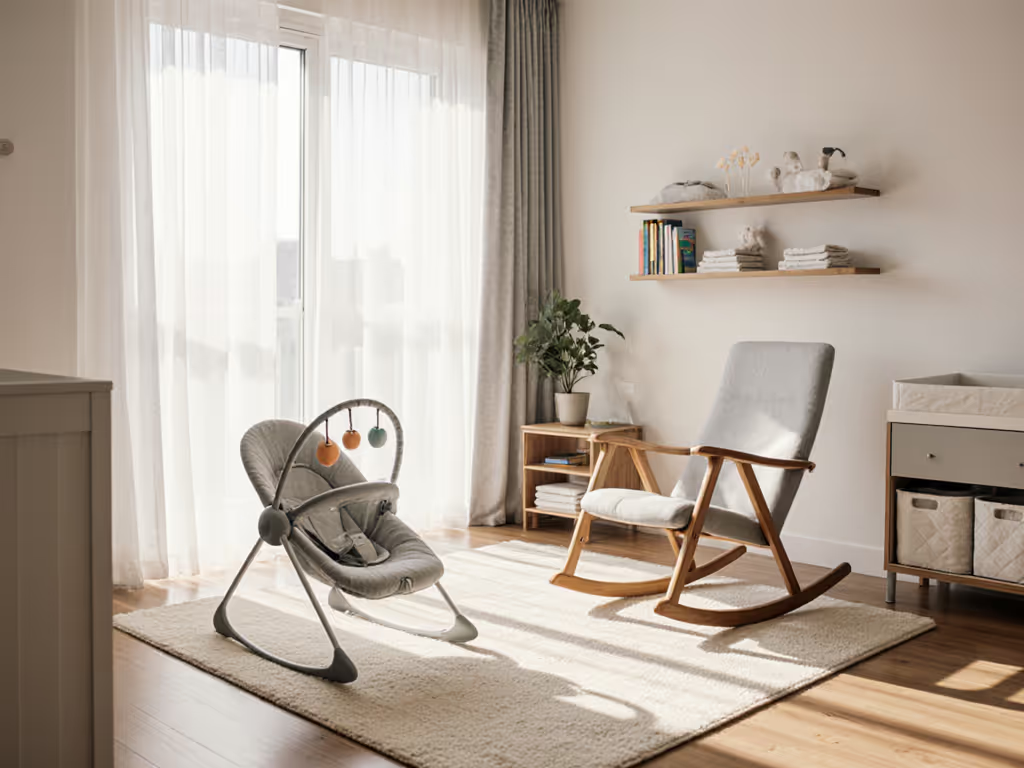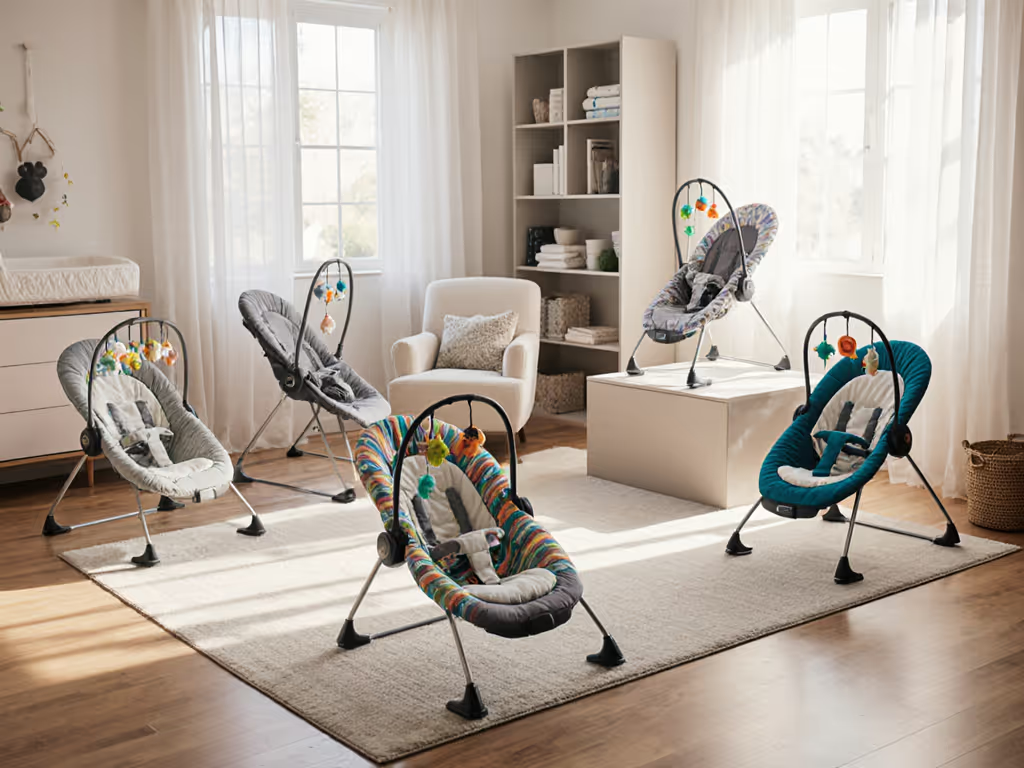
What Is a Reclining Baby Bouncer? Complete Overview
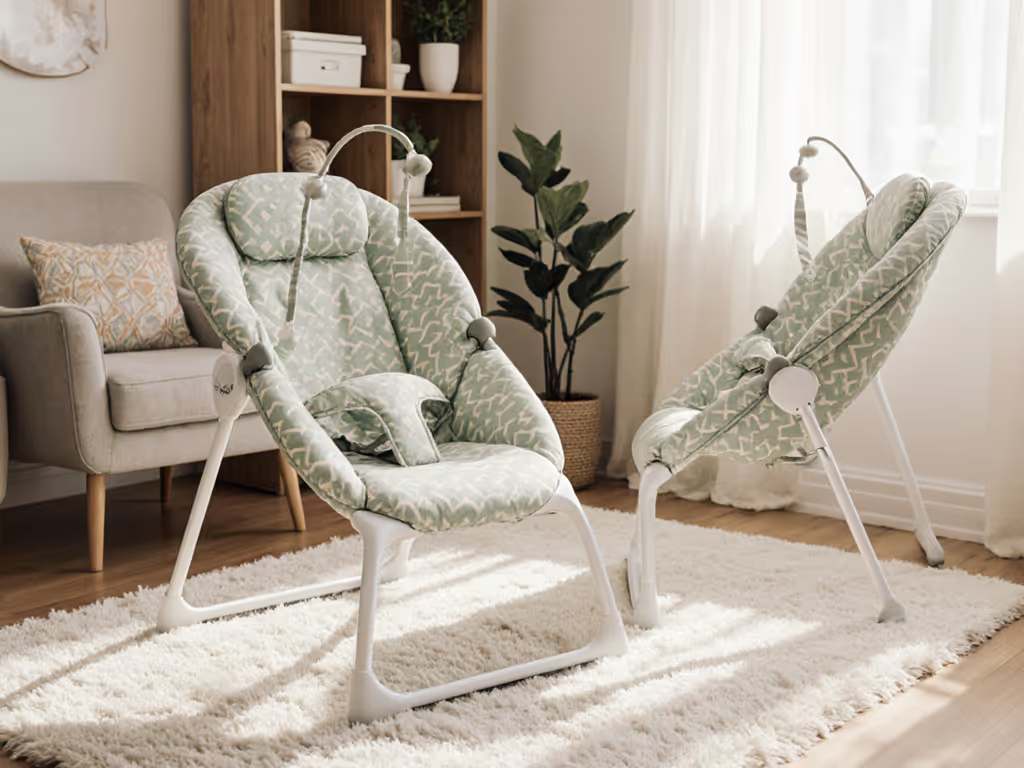
Nearly 60 percent of parents believe baby bouncers are safe for unsupervised use, yet hidden risks persist with improper set-up or misunderstanding their purpose. As new families fill their homes with the latest gear, choosing the right reclining baby bouncer can feel overwhelming. Sorting fact from fiction and knowing the real features, safety standards, and smart options helps parents create a comfortable, safe space for their infants without second guessing every detail.
Key Takeaways
| Point | Details |
|---|---|
| Safety First | Always adhere to safety guidelines, including supervision and appropriate usage of harness systems; bouncers are not intended for sleeping. |
| Understand Mechanisms | Familiarize yourself with the various reclining mechanisms to ensure you select a bouncer that suits your baby's needs and development. |
| Evaluate Options | When choosing a bouncer, consider factors such as portability, adaptability, and safety features to match your family's lifestyle. |
| Debunk Myths | Recognize common misconceptions about bouncers, such as their interchangeability with swings and safety for unsupervised use, to make informed choices. |
Defining Reclining Baby Bouncers and Common Myths
A reclining baby bouncer is a specialized infant seat designed to provide a safe, comfortable space for babies during their early developmental months. Unlike traditional stationary chairs, these bouncers offer adjustable positioning that adapts to your baby's changing needs and comfort levels. They typically feature a lightweight frame with a fabric seat that can recline at different angles, allowing parents to find the perfect position for their little one.
WebMD highlights that these bouncers work through a unique mechanism where babies can initiate movement using their own leg muscles, creating a gentle bouncing motion that can be soothing and entertaining. However, it's crucial to understand that not all bouncers are created equal. Safety guidelines are paramount - these seats should only be used when infants have developed sufficient head control and remain within specified weight limits. Parents often mistakenly believe bouncers are universally safe for all ages, which can lead to potential risks.
Some common myths surrounding baby bouncers need immediate debunking. Consumer Reports emphasizes that while bouncers provide an excellent short-term resting place for awake infants, they are absolutely not safe for extended sleeping. The inclined surface can pose significant risks, including potential breathing difficulties. Key misconceptions include:
- Bouncers are interchangeable with baby swings (they are not)
- Babies can be left unsupervised in bouncers for long periods
- Bouncers are safe sleeping environments
- All bouncers have identical safety features
Understanding these nuances helps parents make informed decisions about when and how to use reclining baby bouncers safely and effectively.
Key Reclining Mechanisms and How They Work
Reclining baby bouncers feature sophisticated mechanical designs that allow smooth angle adjustments to accommodate an infant's developmental stages. These mechanisms typically involve a series of interlocking metal or plastic joints that enable precise positioning without compromising stability. The Newton Baby guide reveals that most modern bouncers incorporate adjustable frames allowing multiple recline positions perfect for different baby ages and activities.
The primary reclining mechanisms generally fall into three primary categories: manual adjustment, semi-automatic, and fully automatic systems. Manual adjustments require parents to physically reposition the seat using built-in levers or sliding mechanisms. Semi-automatic designs feature simplified locking points that click into preset angles with minimal effort. Advanced models might include tension-based reclining where the seat automatically shifts based on the baby's weight distribution and movement.
Safety remains paramount in these design considerations. Robust locking systems are crucial to prevent unexpected collapses or unintended angle changes. Manufacturers incorporate several safety features to ensure secure positioning:
- Multiple secure locking points
- Reinforced joint mechanisms
- Weight-distributed design
- Visible position indicators
Understanding these intricate mechanisms helps parents appreciate the engineering behind seemingly simple baby bouncers.
Each design aims to provide comfort, support, and safety during those critical early developmental months.
Popular Types and Space-Saving Variations
Baby bouncers have evolved dramatically, offering parents a diverse range of options tailored to different living spaces and lifestyle needs. Consumer Reports highlights three primary categories: manual bouncers, responsive bouncers, and automated models with advanced features like vibration settings. These variations ensure that parents can find a perfect match regardless of their home's square footage or specific requirements.
Space-saving designs have become increasingly sophisticated, with manufacturers recognizing the compact living challenges modern families face. Convertible bouncers represent a cutting-edge solution, transforming from infant seats to toddler chairs as children grow. The Verge recently showcased innovative models like the Elvie Rise, which demonstrates how technology can create multipurpose solutions that adapt to changing family dynamics. These smart bouncers can now transition between different configurations without requiring parents to move their sleeping infant.
The most popular types of reclining baby bouncers currently include:
Here's how the main types of reclining baby bouncers compare:
| Type | Motion Source | Key Features | Space-Saving Benefit |
|---|---|---|---|
| Manual Bouncer | Baby's own movement | Lightweight<br>Budget-friendly | Slim, compact frame |
| Electric/Vibrating | Motorized (battery) | Multiple motion/vibration settings | Some models fold compactly |
| Convertible | Varies | Grows with child<br>Multi-position | Transitions to toddler chair |
| Compact Travel Bouncer | Manual (usually) | Foldable<br>Lightweight<br>Portable | Easiest for small spaces |
- Manual Bouncers: Lightweight, budget-friendly, powered by baby's movement
- Electric/Vibrating Bouncers: Battery-powered with multiple motion settings
- Convertible Bouncers: Adaptable seats that grow with the child
- Compact Travel Bouncers: Lightweight, easily foldable designs perfect for families on the go
Modern parents seek versatility, and these space-saving variations deliver exactly that - combining comfort, functionality, and intelligent design in a single, compact package.
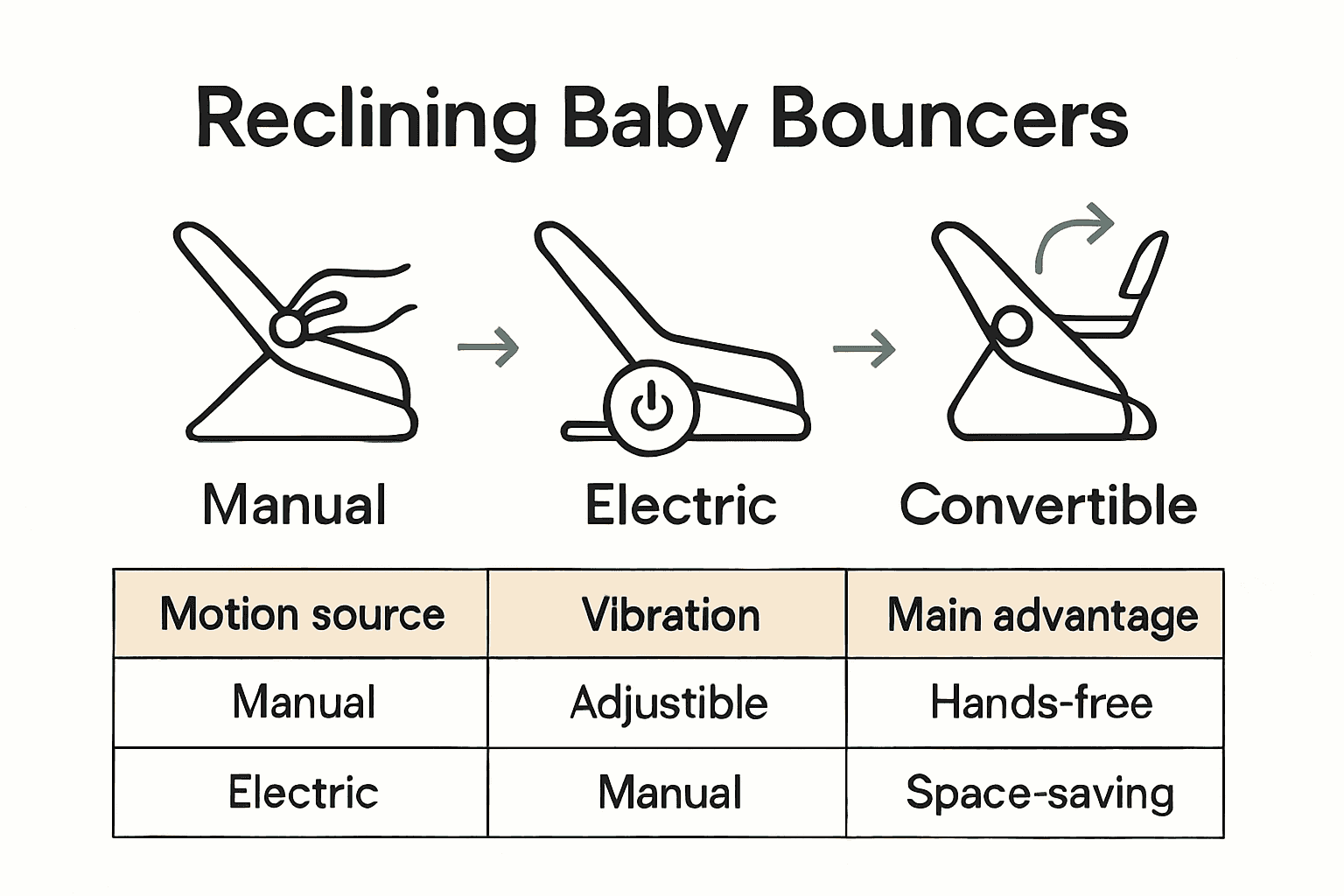
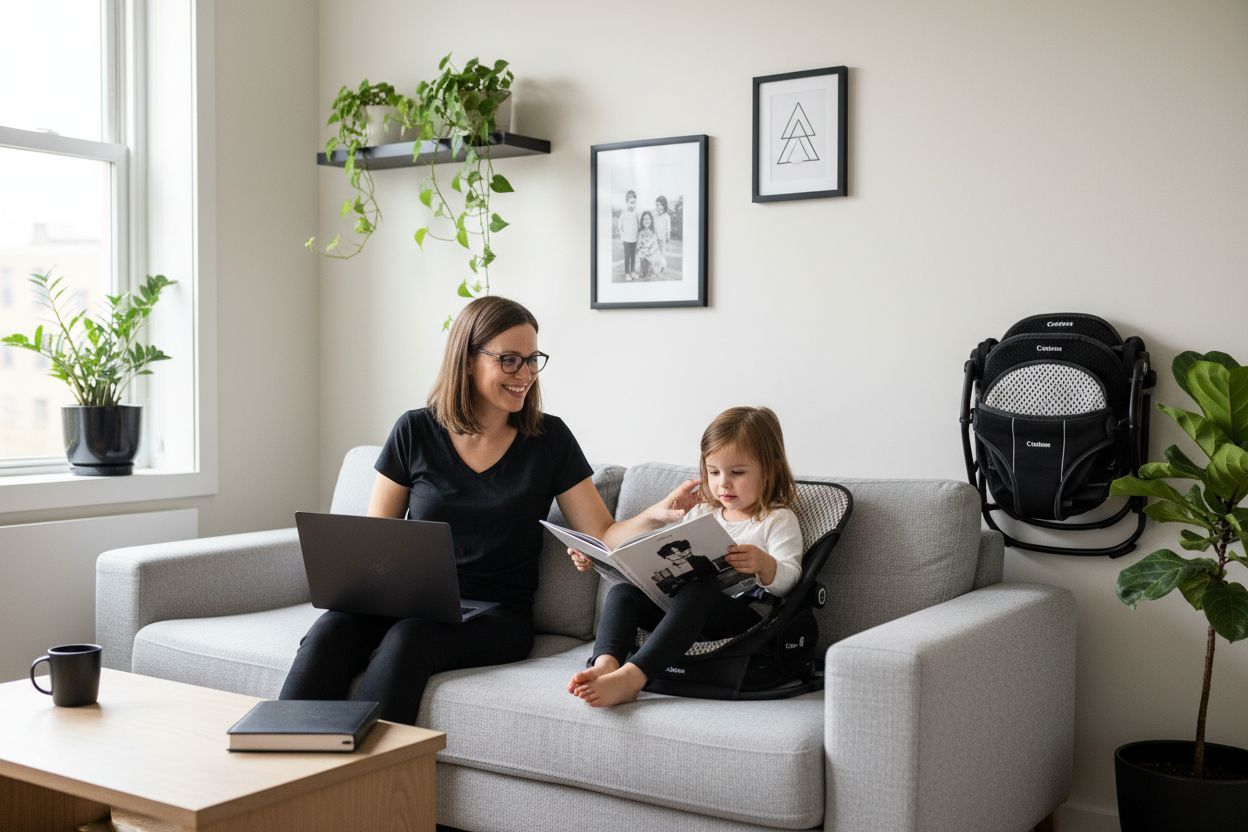
Essential Safety Standards and Usage Tips
Baby bouncer safety is a critical concern for parents, with recent regulatory changes emphasizing the importance of careful usage and design standards. The Australian Competition and Consumer Commission (ACCC) has introduced comprehensive new safety guidelines that underscore the need for rigorous safety protocols. These standards mandate clear warning labels, secure harness systems, and stable base designs to protect infants during their most vulnerable developmental stages.
Consumer Reports provides crucial guidance for safe bouncer usage. The most critical safety tips include always using the provided safety harness, maintaining constant supervision, and avoiding placement on elevated or unstable surfaces. Critical usage restrictions are non-negotiable: bouncers are not intended for sleeping, and prolonged or unsupervised use can pose significant risks to infant safety. Parents must carefully inspect bouncers for structural integrity and stay informed about potential product recalls.
Key safety recommendations for responsible bouncer use include:
- Always buckle the safety harness completely
- Place bouncer on firm, flat surfaces
- Limit continuous use to 30-minute intervals
- Never leave baby unattended
- Stop using when baby can sit up or attempt to climb out
- Regularly check for manufacturing defects
- Keep bouncer away from hazards like stairs or sharp edges
Modern baby bouncers combine innovative design with stringent safety standards, but ultimate responsibility lies with caregivers. Vigilant supervision and adherence to manufacturer guidelines remain the most effective ways to ensure infant safety during bouncer use.
Choosing the Right Reclining Bouncer for Your Needs
Selecting the perfect baby bouncer requires careful consideration of multiple factors that go beyond simple aesthetic preferences. Consumer Reports emphasizes a comprehensive approach to bouncer selection, highlighting key evaluation criteria that can significantly impact your infant's comfort and safety. Parents must assess critical elements such as structural sturdiness, ergonomic design, motion capabilities, and overall compatibility with their specific lifestyle and living environment.
The most important selection factors involve understanding your unique family dynamics and space constraints. Portability and convertibility emerge as crucial considerations for modern parents. Some bouncers offer innovative features like app-controlled motions and multiple recline positions, while others focus on basic functionality. The Verge's coverage of advanced models like the Elvie Rise demonstrates how technology is transforming traditional baby gear, offering solutions that adapt to changing parental needs and infant developmental stages.
When choosing a reclining baby bouncer, consider these essential selection criteria:
- Robust safety harness system
- Weight and age appropriateness
- Ease of cleaning and maintenance
- Compact and foldable design
- Motion versatility
- Additional features like vibration or music
- Budget constraints
- Compatibility with your living space
Ultimately, the ideal bouncer balances safety, comfort, functionality, and your personal parenting requirements. Take time to research, read reviews, and if possible, test different models to find the perfect fit for your family's unique needs.
Discover the Smart Way to Find the Perfect Reclining Baby Bouncer
Are you overwhelmed by all the details and concerns about choosing a safe, space-efficient reclining baby bouncer for your home? Understanding the importance of safety standards, space-saving features, and finding a truly supportive design can feel daunting. From misconceptions about bouncer safety to the challenge of selecting the right model for your living space, your journey to making an informed decision does not have to be stressful.
At Bouncer Lab, we take the guesswork out of your search. Dive into expert guides and comparison reviews packed with real solutions for parents who value both functionality and peace of mind. Whether you are worried about safety features, portability, or ease of cleaning, you will find actionable advice tailored to small-space living and busy routines. Visit Bouncer Lab's homepage to access thorough reviews, safety tips, and practical checklists so you can choose your baby's next bouncer with total confidence. Do not wait to give your family the safest and most comfortable start. Start comparing models and discover the best options today at Bouncer Lab.
Frequently Asked Questions
What is a reclining baby bouncer?
A reclining baby bouncer is a specialized infant seat that allows for adjustable positioning, providing a comfortable and safe resting space for babies while they develop.
How do reclining mechanisms in baby bouncers work?
Reclining baby bouncers feature mechanical designs that allow angle adjustments. These mechanisms can be manual, semi-automatic, or fully automatic, providing different levels of ease and convenience for parents.
What are the types of reclining baby bouncers available?
The main types include manual bouncers, electric/vibrating bouncers, convertible bouncers, and compact travel bouncers, each offering different features and benefits to suit various needs and spaces.
What safety guidelines should I follow when using a reclining baby bouncer?
Always use the safety harness, supervise your baby, avoid placing the bouncer on unstable surfaces, limit use to 30-minute intervals, and regularly check for defects to ensure safety during use.

